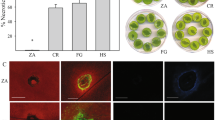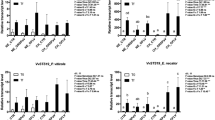Abstract
SEVERAL recent papers from the Department of Plant pathology, Rothamsted, and from the Council for Scientific and Industrial Research of Australia make an impressive collection of new knowledge about virus diseases of plants. F. C. Bawden and N. W. Pirie1 show that sap expressed from the leaves of tobacco plants infected with mosaic contains less than one third of the total amount of virus in the plant. The additional virus can be liberated by successive incubations with commercial trypsin, or, even more successfully, with the mixture of enzymes obtained from crops of the snail Helix aspersa. Subsequent fine grinding releases even more virus, which was found to account in all for one third of the total insoluble nitrogen in the leaf, or 10 per cent of its dry matter. J. B. Hale, M. A. Watson and R. Hull2 discuss “some causes of chlorosis and necrosis of sugar-beet foliage”. They describe the symptoms and characteristics of two viruses, one fungus disease and four nutritional disorders of the crop, combining analytical and pathological methods with field experiments. Sugar-beet yellows and manganese deficiency can be distinguished visually, according to the authors, but a little more clarity of comparison would be welcome. The paper is, however, a vigorous attempt to place the field recognition of sugar-beet diseases on a surer basis than hitherto, but still leaves the impression that the advisory pathologist requires the backing of chemist and virus etiologist. A new species of shallot aphis, Myzus ascalonicus, is described by J. P. Doncaster and B. Kassanis3. The aphid resembles Myzus persicœ, and is also a vector of plant viruses. Both the species transmit cucumber virus I, Hyoscyamus virus III and sugar-beet yellows virus. M. ascalonicus transmits dandelion yellow mosaic, whereas M. persicœ does not, though the latter aphid transmits potato Y virus, lettuce and sugar-beet mosaics, and severe etch virus, for which M. ascalonicus is not a vector. Here is further knowledge for use in virus analysis.
This is a preview of subscription content, access via your institution
Access options
Subscribe to this journal
Receive 51 print issues and online access
$199.00 per year
only $3.90 per issue
Buy this article
- Purchase on Springer Link
- Instant access to full article PDF
Prices may be subject to local taxes which are calculated during checkout
Similar content being viewed by others
References
Brit. J. Exp. Path., 27, 81 (1946).
Ann. App. Biol., 33, No. 1, 13 (1946).
Ann. App. Biol., 33, No. 1, 66 (1946).
Bawden, F. C., and Kassanis, B., Ann. App. Biol., 33, No. 1, 46 (1946).
J. Coun. Sci. and Ind. Res., 18, No. 3, 219 (1945).
J. Coun. Sci. and Ind. Res., 18, No. 3, 209 (1945).
Phytopath., 35, No. 8, 591 (1945).
Phytopath., 35, No. 8, 585 (1945).
Rights and permissions
About this article
Cite this article
GRAINGER, J. Plant Viruses. Nature 158, 885–886 (1946). https://doi.org/10.1038/158885a0
Issue Date:
DOI: https://doi.org/10.1038/158885a0
Comments
By submitting a comment you agree to abide by our Terms and Community Guidelines. If you find something abusive or that does not comply with our terms or guidelines please flag it as inappropriate.



